Hello everyone!
I am excited to introduce you to the twelve types of red birds that can be found in Michigan.
These birds are not only stunningly beautiful but also play an important role in Michigan’s ecosystem.
In this article, I will be discussing each of these species, their unique features, and where you can spot them in the state.
Whether you’re a birdwatcher, a nature enthusiast, or just interested in Michigan’s wildlife, you won’t want to miss this informative piece.
Let’s dive in!
| Image | Name |
|---|---|
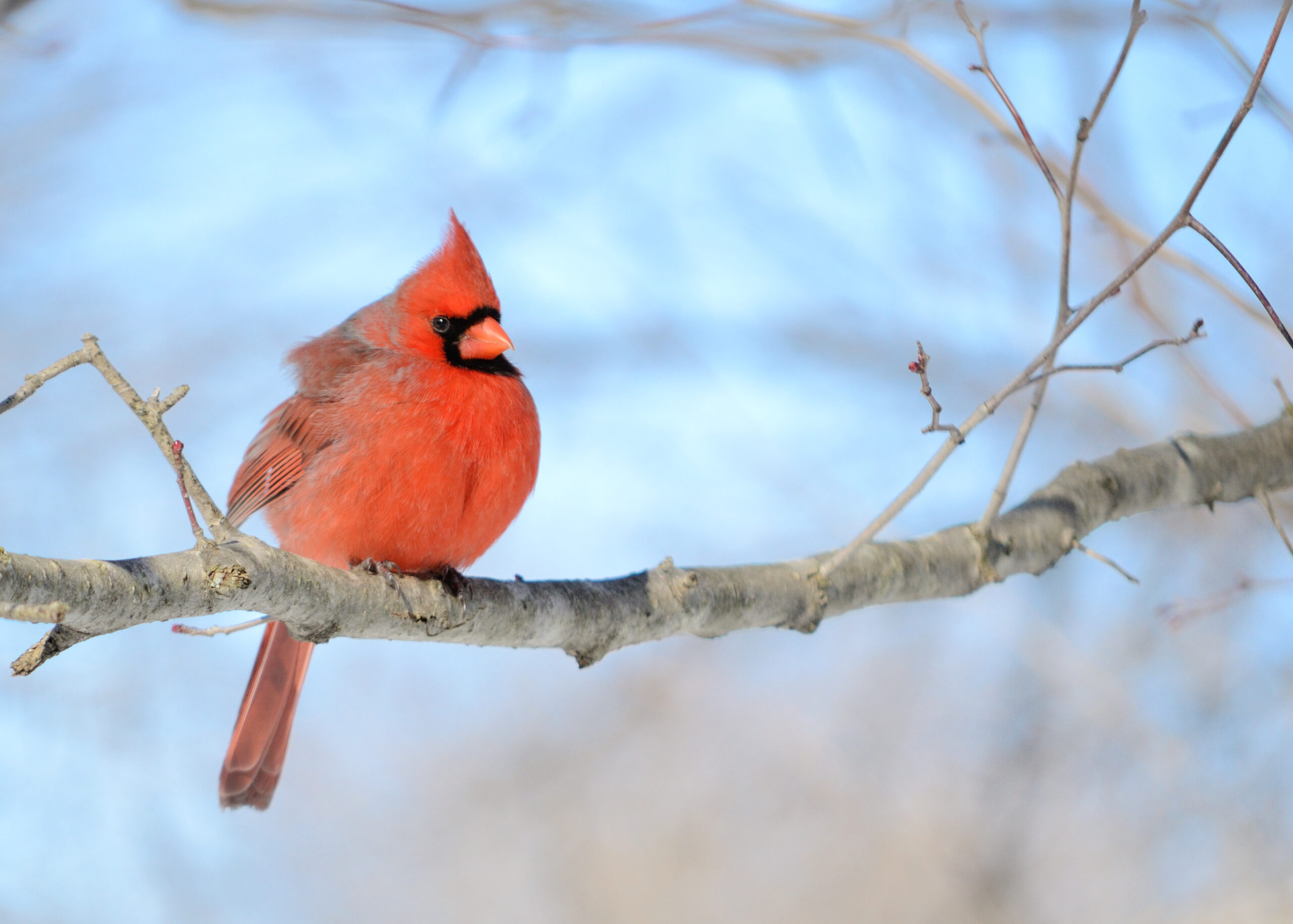 | Northern Cardinal |
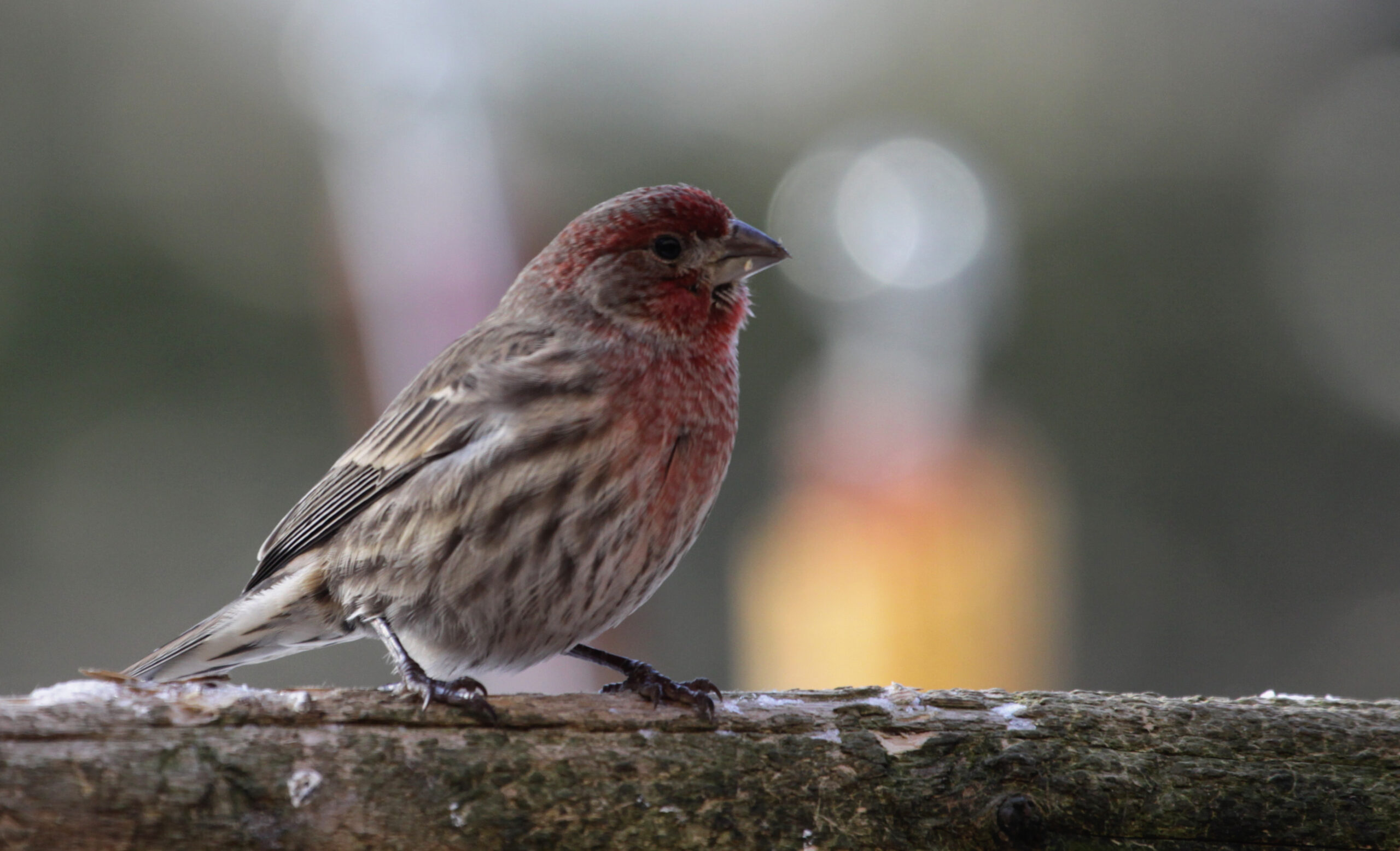 | House Finch |
 | Scarlet Tanager |
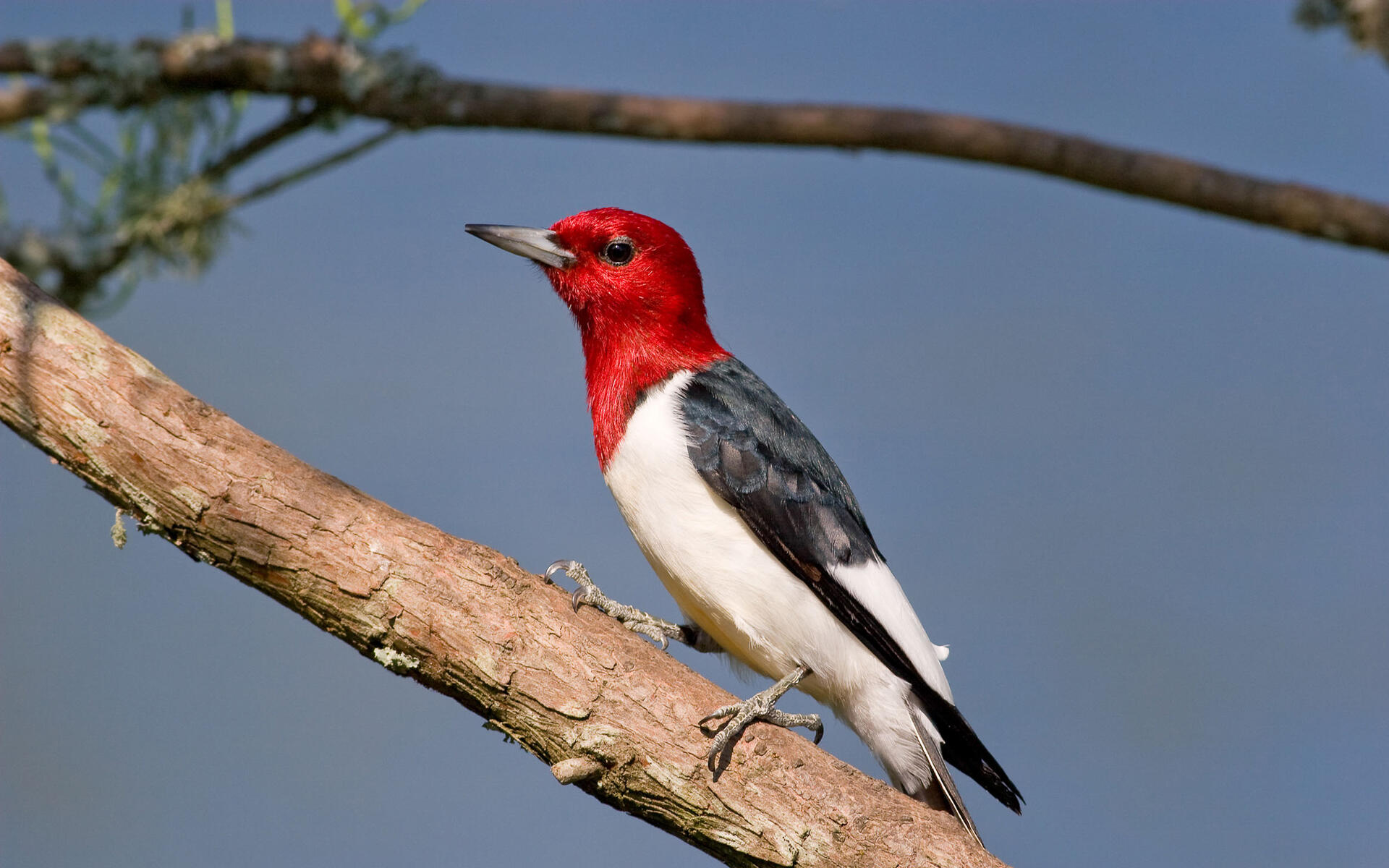 | Red-headed Woodpecker |
 | Red-bellied Woodpecker |
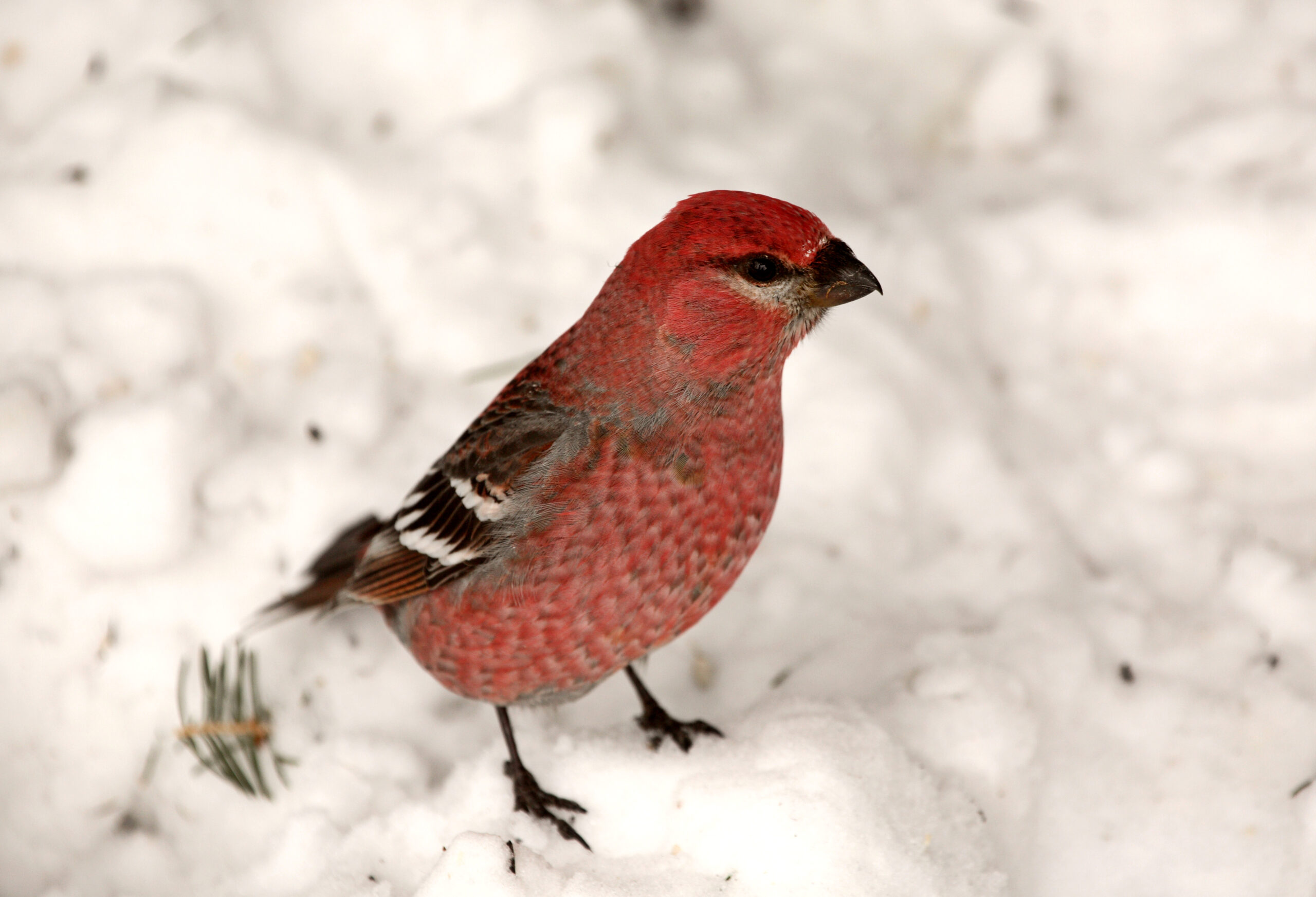 | Red Crossbill |
 | Ruby-throated Hummingbird |
 | Purple Finch |
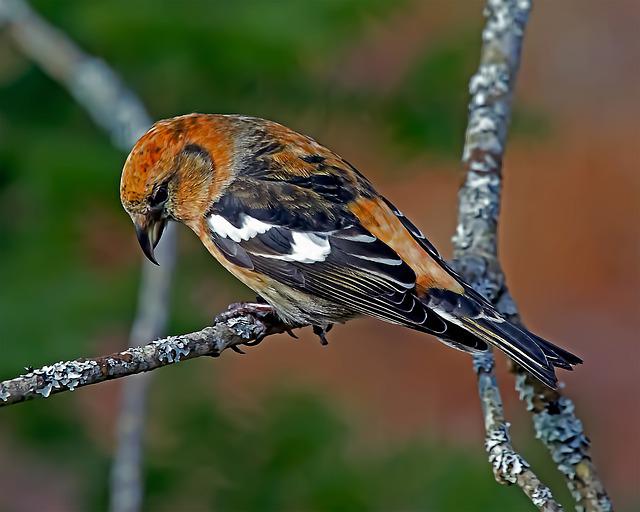 | White-winged Crossbill |
 | Rose-breasted Grosbeak |
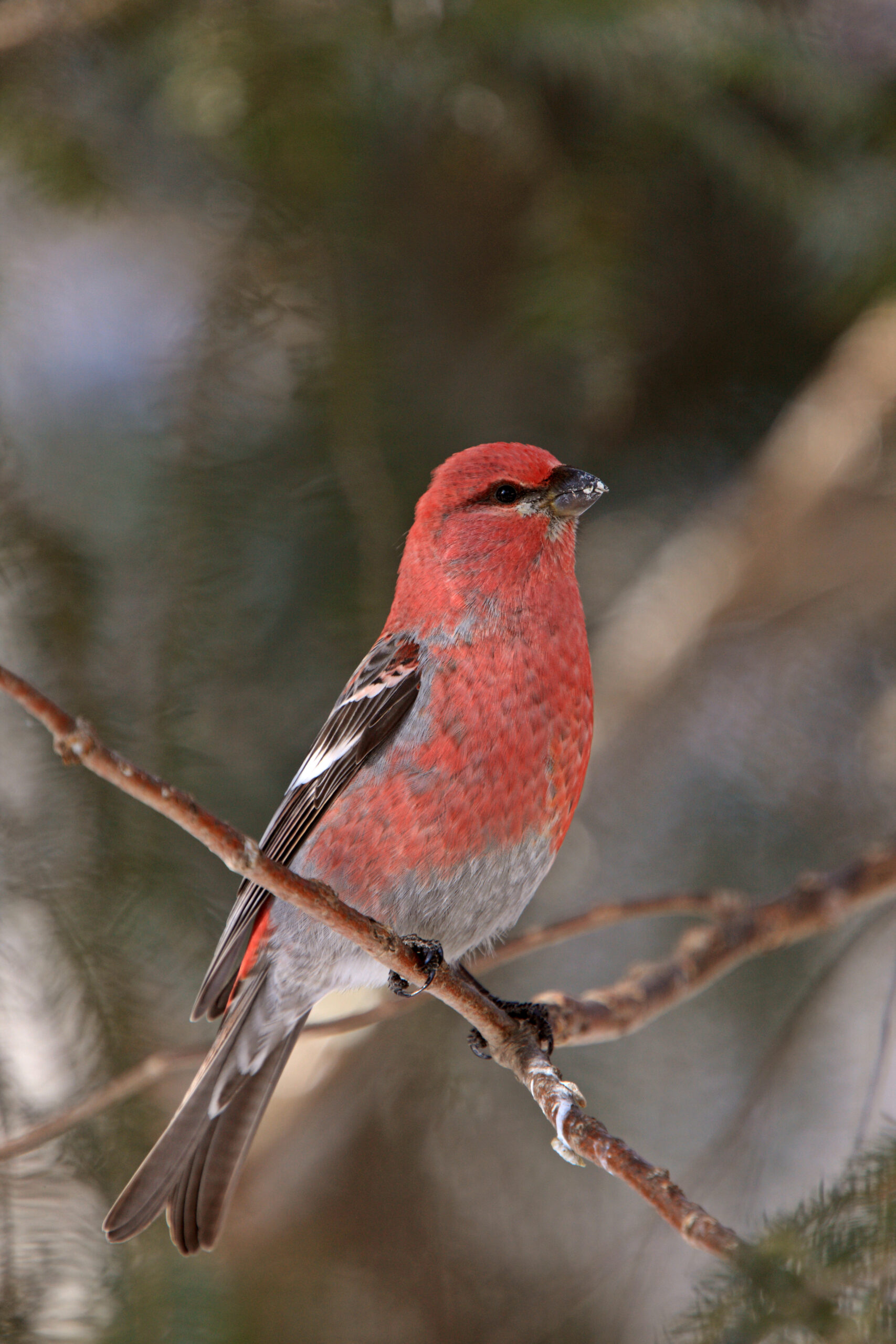 | Pine Grosbeak |
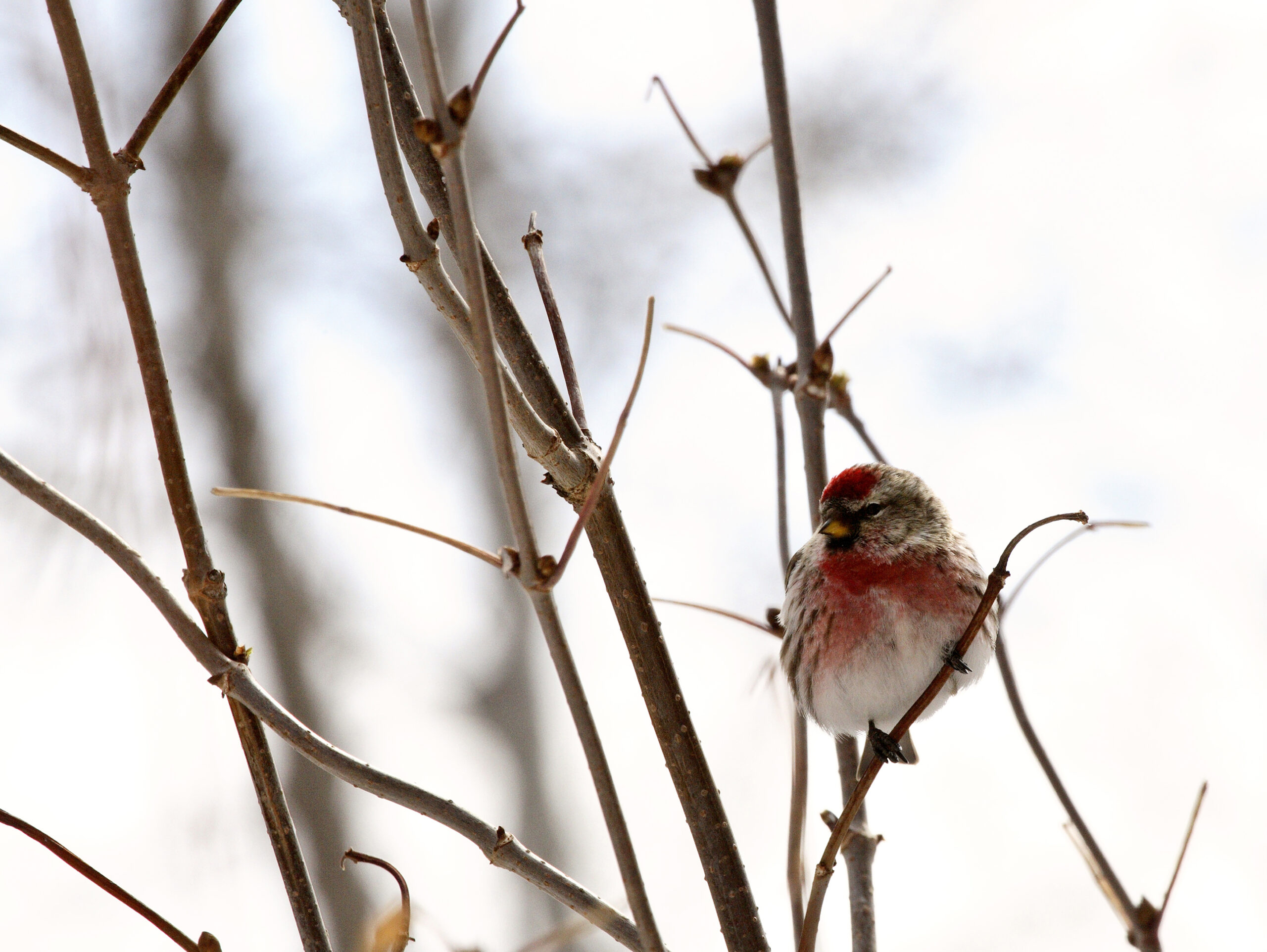 | Common Redpoll |
Types of Red Birds in Michigan
1. Northern Cardinal

The most recognizable red bird in Michigan is the Northern Cardinal, which serves as the state bird.
The male Northern Cardinal is easily identified by the vivid red of his breast, forehead, and abdomen and the darker feathers of his back and wing plumage.
A black mask covers the whole face, beginning at the base of the colorful bill and going all the way down to the neck.
The female Northern Cardinal is a more subdued buffy brown than the vibrant male.
The Northern Cardinal is a frequent resident of Michigan’s suburban and urban areas, where it may be spotted in parks, gardens, and even little woods.
During the colder months, it abandons its territory and instead feeds in groups of up to 26 other birds.
This bright red bird is a common sight at backyard bird feeders.
2. House Finch
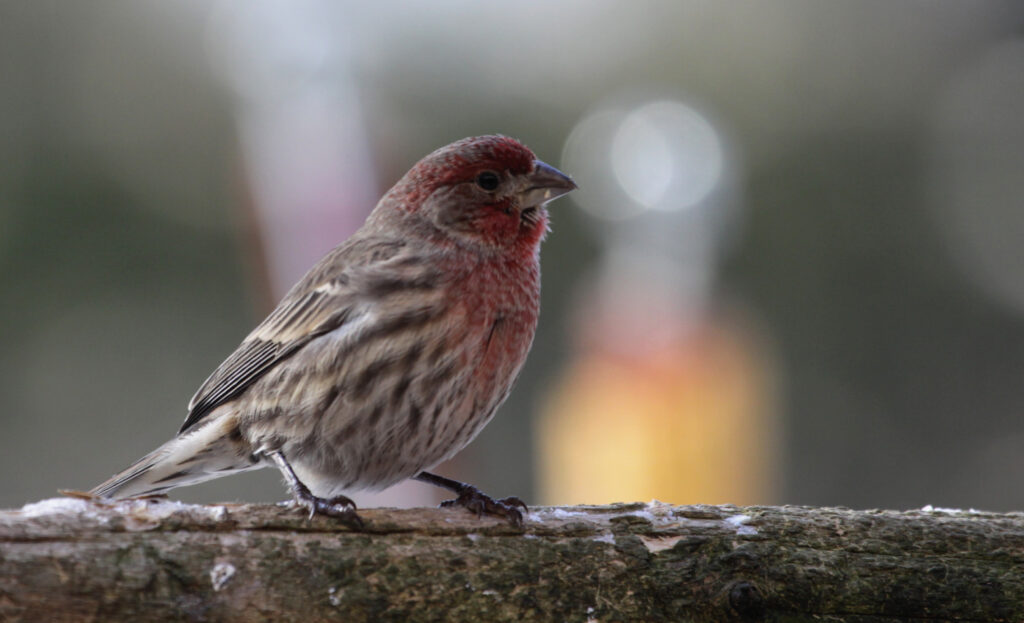
Among the more abundant red birds across North America, the House Finch is primarily spotted in human-dominated environments like cities and towns of various sizes.
Sometimes more orange or yellow in hue, the vivid red plumage on the forehead and upper chest is a certain way to spot an adult male House Finch.
Females, in contrast to their red male counterparts, have grey stripes on a brown base.
It wasn’t till the 1940s that the bright red House Finch was seen near New York and some other eastern cities.
It was in the 1950s and 1960s that the eastern House Finch species started to flourish, and by the year 2000, it had extended so far west that it had joined the original western population.
The House Finch’s diet consists solely of plant matter, including fruit, seeds, and buds.
You can count on these bright red birds to be one of the initial visitors to the garden bird feeder.
Although not a migratory species, this red bird may be seen in Michigan throughout the year.
Nevertheless, it does relocate to locations with greater food during the mating season.
3. Scarlet Tanager

The male Scarlet Tanager has flamboyant red feathers that stand in stark contrast to the bird’s coal-black wing and tail feathers, giving the bird a very tropical look.
The male has a stunning red hue, while the female is more of a light yellow, typical Michigan bird.
This bright red bird migrates towards South and Central America during the winter months, returning to Michigan in the summertime.
Both males and females use territorial songs to proclaim their territory and scare away intruders.
Since it prefers warmer weather, this red bird doesn’t show up until late spring and disappears early in the autumn.
Scarlet tanagers, which originate in Canada, may be spotted in this state during the autumn and spring migrations.
The Scarlet Tanager represents the only tanager bird type that breeds across Michigan; the rest of the species are all found in warmer climates.
4. Red-headed Woodpecker
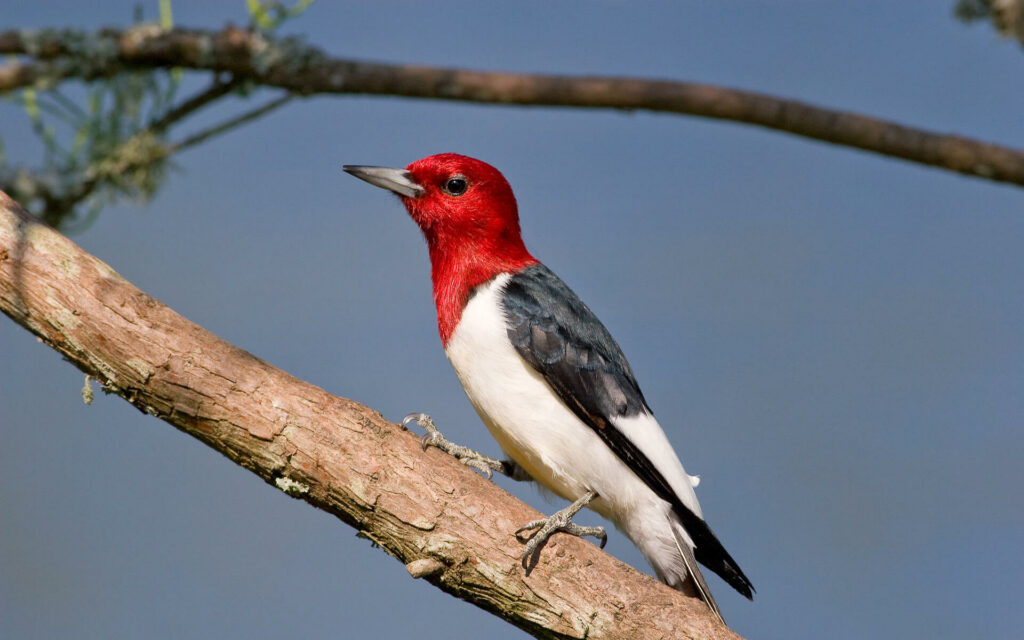
The Red-headed Woodpecker is unusual among woodpeckers in that its sexes are indistinguishable.
The crimson head of the Red-headed Woodpecker contrasts sharply with its pure black back.
They possess black wings and a black tail in addition to their white rump, stomach, and breast.
It has grayish legs and a beak.
No other woodpecker across Michigan possesses a head as completely crimson as this one.
Pileated Woodpeckers are distinguished by their mostly blackheads.
The Red-headed Woodpecker is most at home in open woodlands or woodlands with many fallen or decaying trees.
As compared to other woodpeckers, who typically only utilize nest cavities once or for a short length of time, this one may reuse the same one for many years in a row.
Sadly, the Red-headed Woodpecker’s population has dropped by more than 95%, making sightings of this once-common bird across Michigan a thing of the past.
5. Red-bellied Woodpecker
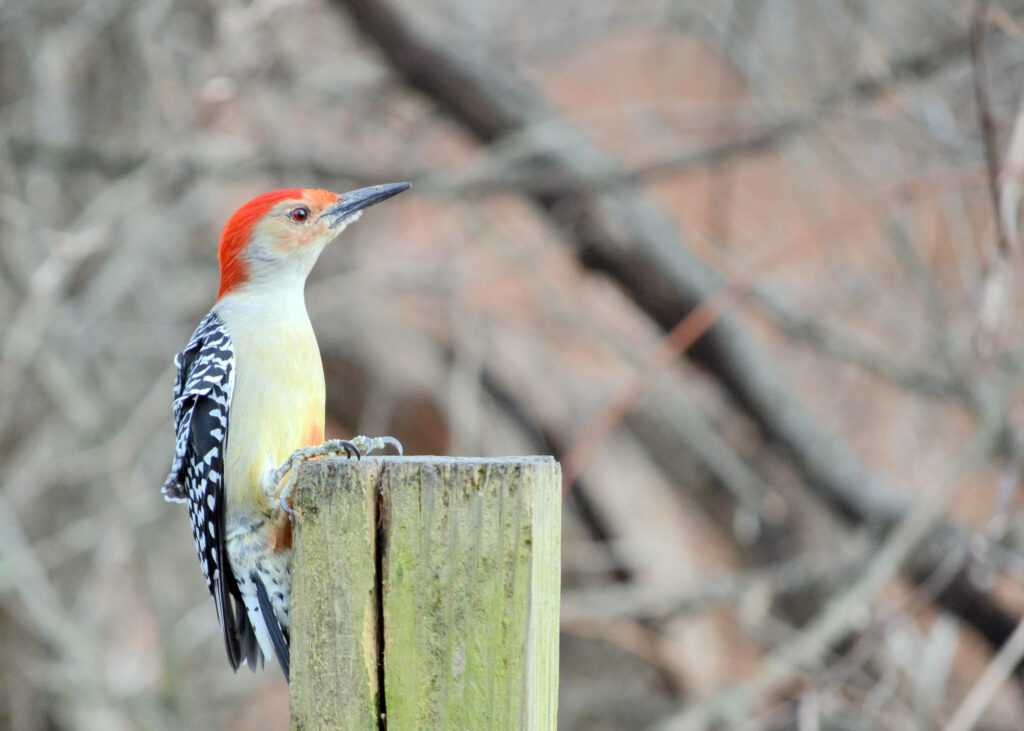
The Red-bellied Woodpecker is characterized by a white tail and a black-and-white “Zebra” design on its back.
Its ruby halo extends all the way to its collarbone.
The female possesses a partly gray crown, but otherwise, the sexes seem identical.
The Red-bellied Woodpecker is at home in dense, shaded forests, along forest margins, and in gardens with mature trees.
It makes tunnels in decaying wood in search of insects, centipedes, spiders, and other things.
This brightly colored bird prepares for the upcoming winter by stashing nuts and berries away in nooks and crannies in trees.
A Red-bellied Woodpecker’s nest is always located just below the previous year’s nest in a single tree.
The rufous coloration that gives this bird its name is only seen up close.
Thankfully, this gorgeous bird’s territory is rapidly spreading over the whole nation.
6. Red Crossbill

Their names come from the fact that their bills look like a pair of crossed scissors when bent.
The adult male of this species of red bird has a dark brown back and wings with a bright red underbelly, crest, and rump.
The olive-colored females and juvenile Red Crossbills are less visible because of the stripes that decorate their sides and bellies.
The crossbill of a red crossbill is sharp enough to cut through the layers of a pine cone, allowing the bird to extract the seeds within.
These red birds can pin the cones to the ground with their feet as they use their tongues to remove the seeds.
These crossbills’ mating season begins in February or perhaps earlier, depending on when pine cones are ready to be eaten.
7. Ruby-throated Hummingbird

One of Michigan’s tiniest birds, the Ruby-throated Hummingbird, may be found in the state’s forests.
The sunshine touches the male’s black neck and reflects it as bright ruby red.
Hovering in midair, its wings making a buzzing noise like a little generator, this hummingbird is capable of the whole range of flight behavior seen in other hummingbirds.
Hummingbirds are remarkable birds because they can beat their hearts over 1,200 times every minute and can take in air at a rate of up to 240 to 250 breaths per minute.
The Ruby-throated Hummingbird favors tubular blooms because of the surplus nectar they provide.
Its diet consists of floral nectar and insects.
It’s a long-distance migrant that travels south to Central America for the winter.
8. Purple Finch
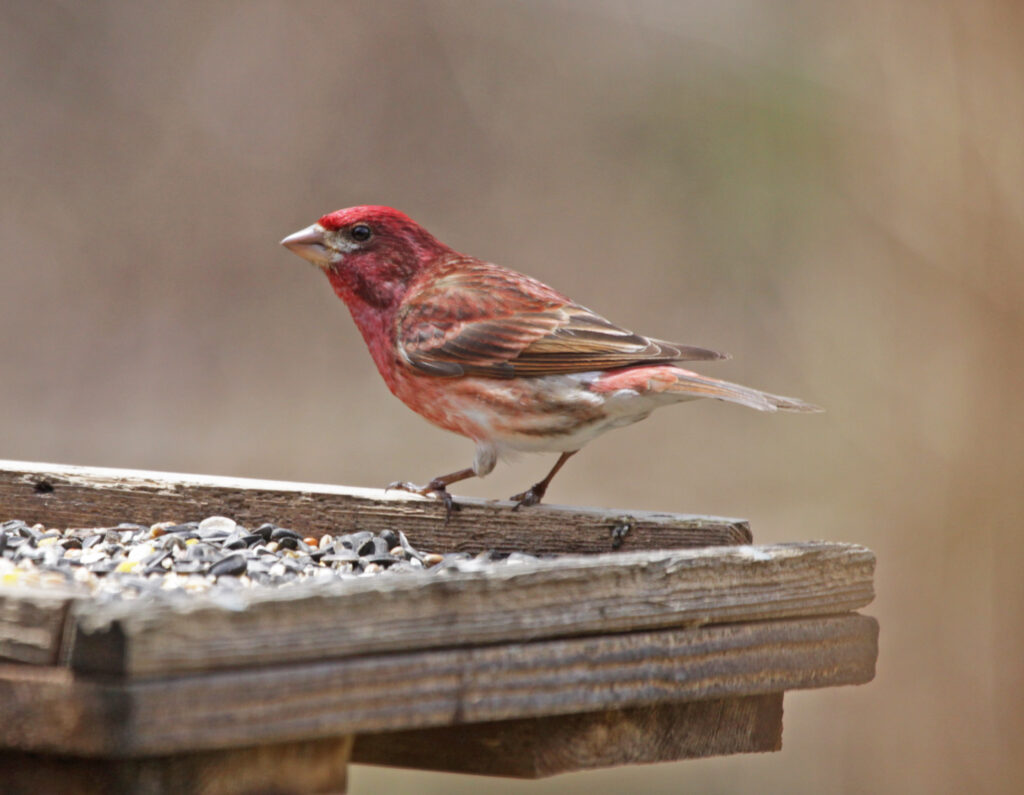
The Purple Finch is a small, compact songbird having a conical beak and a bigger-than-average head.
Adult males have intense raspberry-red coloring on their heads and chests, with red and brown stripes running down their bodies.
There are pink streaks across the otherwise cream-colored flanks.
The western birds in the range appear gray on the abdomen, whereas the eastern birds’ bellies are white.
Michigan’s Purple Finches are distinguished by their drab gray underbellies.
Females and juveniles have streaked grayish-brown feathers on their upper bodies, while their undersides are speckled cream and brown.
The mating season for Purple Finches is from May through August across northern Michigan, eastern Canada, and the northeastern United States.
Nonetheless, these birds fly south for the winter, spending the chillier months in the eastern United States.
They are now ubiquitous across the state of Michigan.
9. White-winged Crossbill

The White-winged Crossbill, like all other crossbills, possesses a beak that is shaped like a cross.
The mature male White-winged Crossbill has pinkish-red feathers throughout much of its body, albeit this coloration is less intense than that of the male Red Crossbill.
Both the tail and the wings appear black, having the wings featuring two white wing bands.
Females have golden streaks on their bodies, but their wings remain black and have a wing bar design like that of males.
The majority of White-winged Crossbills do not migrate south for the winter and instead spend the whole year within their breeding territory across Canada and the northeastern United States.
White-winged Crossbills are uncommon wintertime visitors that may be more numerous in certain years across Michigan.
10. Rose-breasted Grosbeak

The Rose-breasted Grosbeak‘s big bill and distinctive markings make it a standout among birds.
Adult males have crimson breasts and a jet-black hood and rear in the summertime.
It is otherwise black wings possess white patches and stripes.
In contrast, both adult females and juveniles have brown plumage that is paler on the underside than the back and is streaked.
Their eyebrows and wing bars are likewise white.
It is summer across Michigan when the Rose-breasted Grosbeak stops through.
This crimson-winged songbird migrates to Central America every winter. Foraging on pine cone seeds is its only source of nutrition, making it similar to other crossbill species.
11. Pine Grosbeak
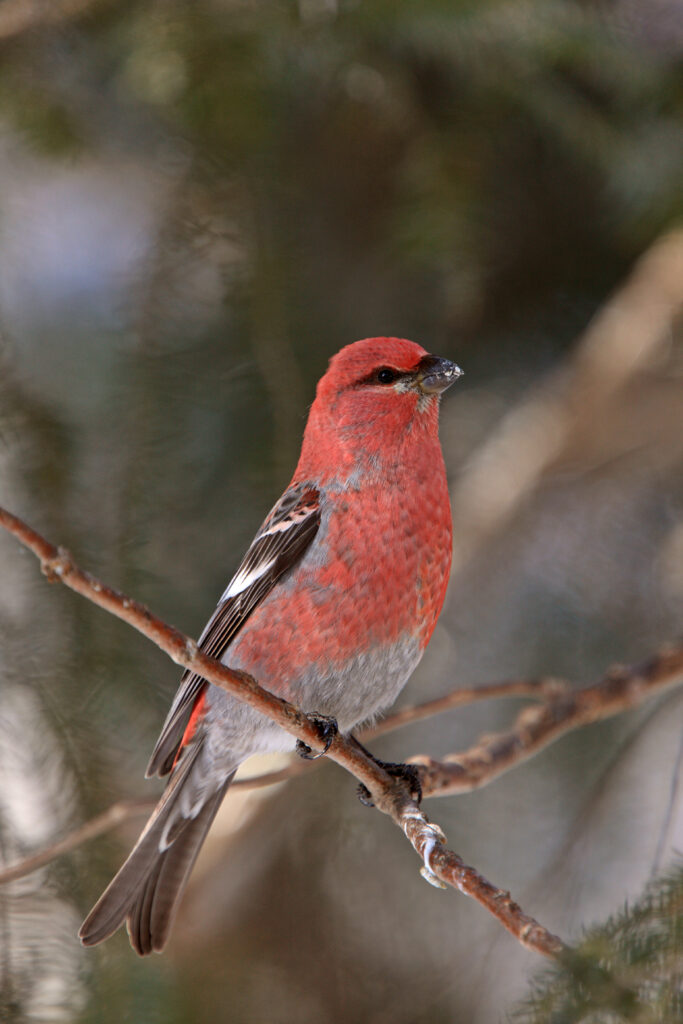
A red bird with a small, stubby bill, the Pine Grosbeak is a songbird.
Red on their backs and bellies, mature males have varied degrees of grayish on their flanks.
It has a black body and wings having two white wing bands.
When contrast to males, females seem duller and possess a brownish-yellow tint.
This red bird is a northeastern species found only in the upper peninsula of Michigan.
It stays all year long, but if the winters become too hard, it could go south.
12. Common Redpoll
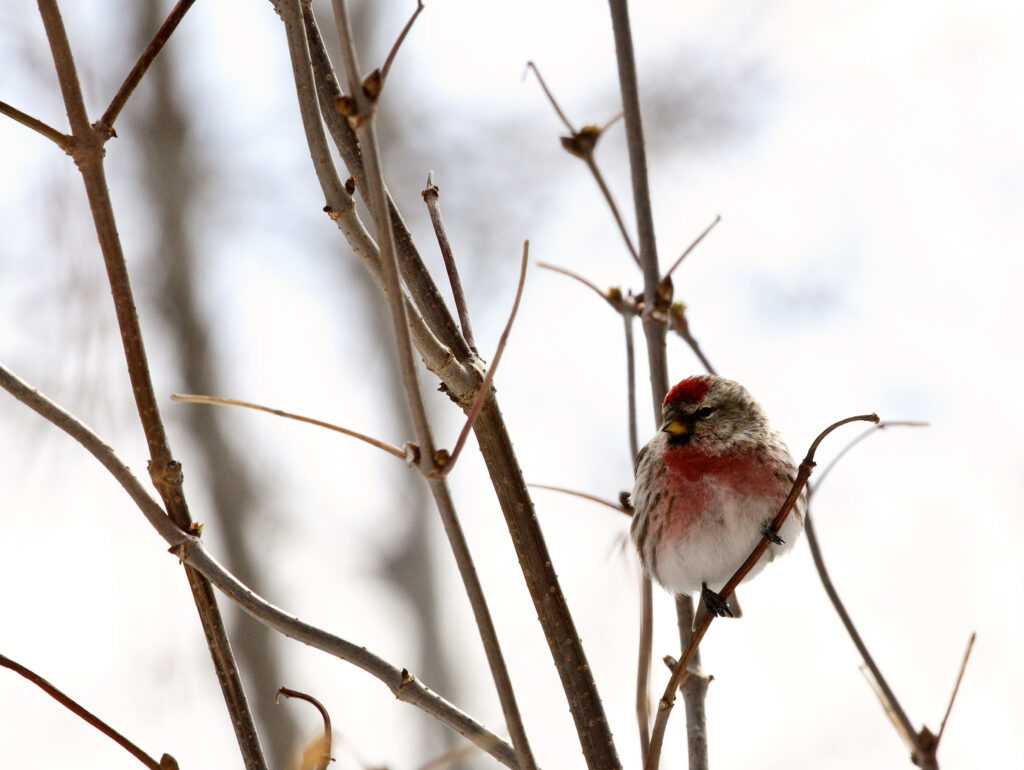
The little Common Redpoll lives in the woods throughout the northern hemisphere.
It is a resident breeder across Canada and a rare Michigan winter visitor.
A mature male will possess a grayish-brown head, a redhead, and pinkish-red breasts and flanks.
While females have fewer colors overall, they additionally have a redhead.
The top bodies of both sexes are streaked with brown and gray.
This red bird is found mostly in boreal woods from the Arctic Circle southward.
Outside of the mating season, they congregate in small groups and wander from place to place in search of suitable habitats rich in seeds.
Conclusion
In conclusion, the twelve types of red birds found in Michigan are a testament to the state’s rich biodiversity and natural beauty.
From the striking Scarlet Tanager to the energetic Northern Cardinal, each of these birds brings its unique color and personality to Michigan’s landscape.
As we continue to face environmental challenges, it’s important to remember the crucial role that birds and other wildlife play in maintaining the balance of our ecosystem.
By learning more about these red birds and advocating for their protection, we can help ensure that they continue to thrive for generations to come.
So grab your binoculars and head out to discover the beauty of Michigan’s red birds!
FAQ
Where can I see red birds in Michigan?
Red birds can be found throughout Michigan, but some of the best places to spot them include state parks, nature reserves, and wildlife refuges. Some popular spots include Sleeping Bear Dunes National Lakeshore, Tahquamenon Falls State Park, and Pointe Mouillee State Game Area.
Do all red birds in Michigan have red feathers?
No, not all red birds in Michigan have red feathers. For example, the Red-bellied Woodpecker has a red head and nape, but its belly is a pale grayish-tan color.
Are red birds in Michigan endangered?
Some red birds in Michigan, such as the Kirtland’s Warbler, are listed as endangered or threatened. However, many other red bird species in Michigan are considered to be of least concern.
What can I do to attract red birds to my yard in Michigan?
To attract red birds to your yard in Michigan, consider offering food and water sources that are attractive to these birds. Examples include sunflower seeds, suet, and nectar feeders. Planting native trees and shrubs can also provide habitat for birds to nest and feed.
Last Updated on May 10, 2023 by Lily Aldrin
